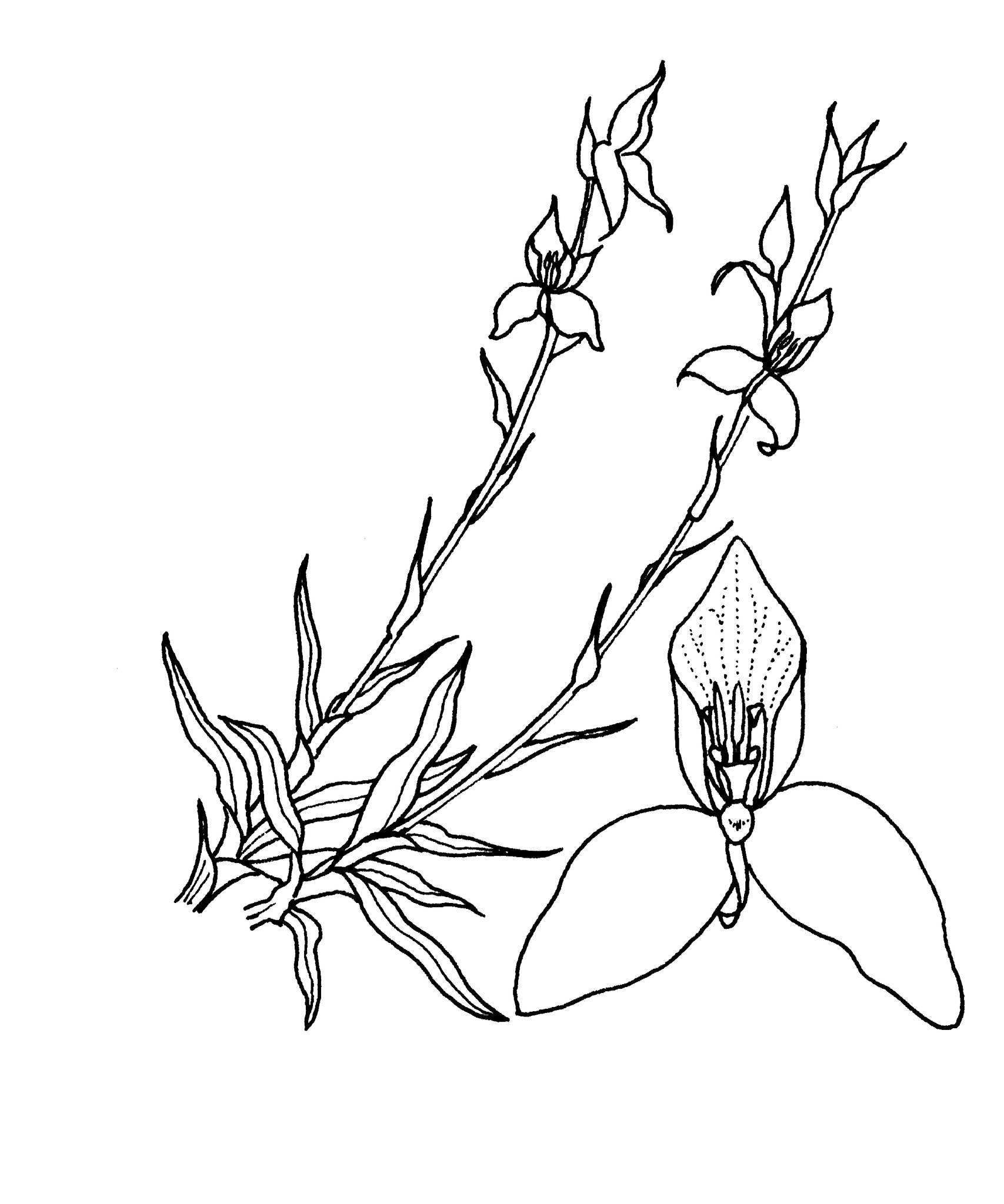
Origin of name obscure, but perhaps from Latin dis (dives) – rich; an allusion to the beauty of the flowers; or possibly after the legendary Queen Disa of Sweden.
Lowers; or possibly after the legendary Queen Disa of Sweden. Terrestrial or epilithic herbs, sympodial, deciduous or evergreen.tubers ovoid, ellipsoid or spherical, paired at base of leaves, sometimes also produced singly at ends of stolons. Leaves many along fertile stems or in basal rosettes on sterile plants, linear to ovate, margins entire, leathery. Inflorescence a terminal raceme, erect. Flowers usually resupinate, 1-many, small to large, variously coloured. Sepals free, similar, dorsal erect, broad and hooding, with a basal spur, laterals usually spreading. Petals much smaller than sepals, often partially joined to column and lying inside dorsal sepal. Labellum small and narrow. Column short. Pollinia 2, club-shaped.
About 100 species mostly from Africa, a few species in Madagascar and 1 from the Mascarene Islands.
Terrestrial with often brightly coloured flowers dominated by the sepals.
Source: (2005). Orchidaceae. In: . Horticultural Flora of South-eastern Australia. Volume 5. Flowering plants. Monocotyledons. The identification of garden and cultivated plants. University of New South Wales Press.
